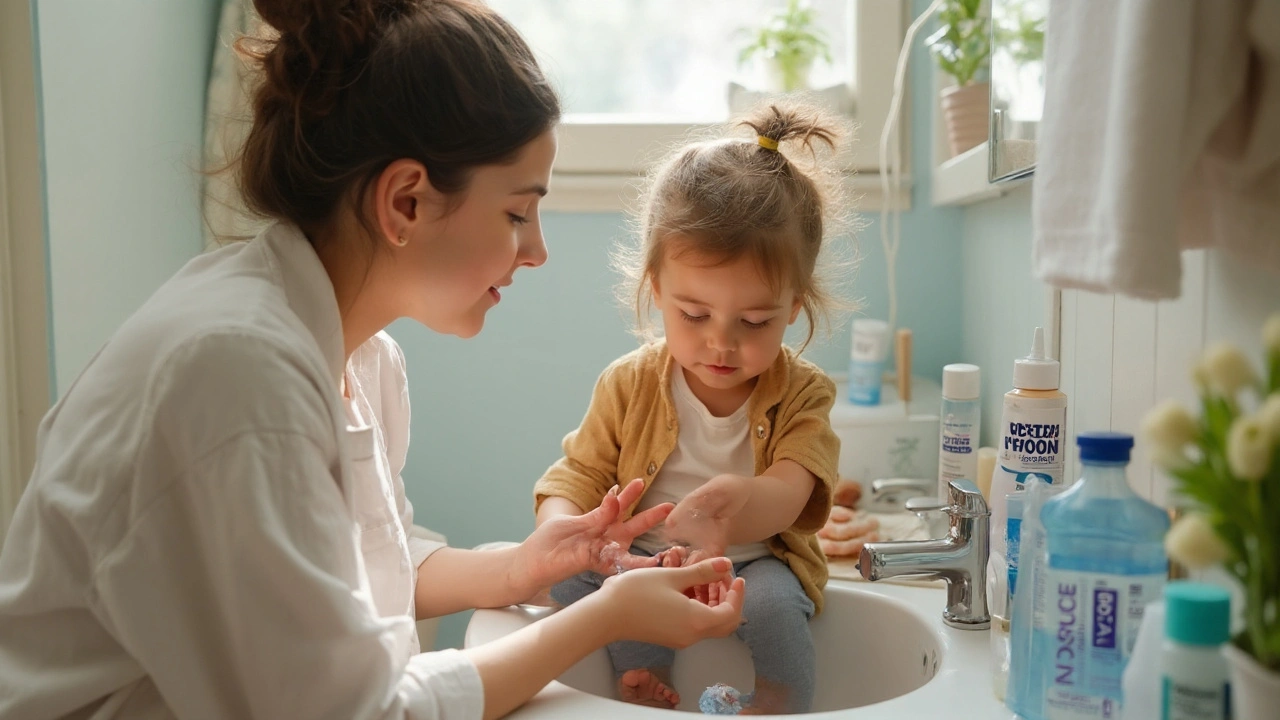Drugstore antiseptics: what they are and which to pick
Walking into a pharmacy you’ll see sprays, bottles, and tubes labeled antiseptic. They sound similar, but each has a job. This short guide helps you pick the right antiseptic for small cuts, scrapes, and home-first-aid, plus simple rules to use them safely.
Common antiseptics you’ll find at the drugstore
Povidone-iodine (Betadine): good for surface wounds and prep before minor procedures. It kills a wide range of germs. Use it on small cuts but avoid long-term daily use on large open wounds unless advised by a doctor.
Chlorhexidine (Hibiclens, Savlon variants): works well on skin and around surgical sites. It lasts longer on skin than alcohol. Not recommended for use near the eyes or inside the ear canal.
Isopropyl alcohol (rubbing alcohol 70%): great for cleaning instruments and quickly drying surfaces. Harsh on the skin — it stings and can slow healing if used repeatedly on open wounds.
Hydrogen peroxide: useful to remove dirt and debris initially because it foams, but it can damage healthy cells. Use once to clean a wound, then switch to milder antiseptics or plain water.
Benzalkonium chloride (antiseptic wipes/sprays): gentler on skin and good for kids’ minor scrapes. Works well when you want less sting than alcohol.
How to choose and use antiseptics safely
Look at the active ingredient and the use instructions on the label. Choose a product based on the wound and who it’s for: for adults a wider range is fine; for babies pick gentle formulations or follow pediatric advice.
Basic application steps: wash your hands, rinse the wound under clean running water to remove grit, dab (don’t scrub) with a clean cloth, apply a small amount of antiseptic, let it air-dry if the product says so, then cover with a sterile dressing if needed.
Don’t put antiseptics inside deep puncture wounds, animal bites, or large gashes — those need medical attention. Avoid using antiseptic sprays near the face or inhaling them. Never use antiseptics in the eyes; if that happens, flush with plenty of water and seek care.
Newborns: skin is thin and sensitive. Avoid alcohol and strong antiseptics on newborn skin unless a doctor recommends them. For umbilical cord care, follow your pediatrician’s advice — in some settings chlorhexidine is used, but dry cord care is often fine in low-risk births.
Storage and checks: keep antiseptics in a cool, dry place away from sunlight. Check expiration dates — expired antiseptics lose effectiveness. If a product changes color or smells strange, don’t use it.
When to see a doctor: redness that spreads, increasing pain, pus, fever, or a wound that won’t stop bleeding are signs you should get medical help. For bites, deep punctures, or wounds with foreign material, see a clinician promptly.
If you’re unsure which antiseptic to buy, ask the pharmacist or your doctor. A quick question can save time and avoid skin irritation or improper use. Keep one small antiseptic and a few sterile dressings in your home first-aid kit — that’s usually all you need for minor incidents.
Which Drugstore Antiseptics Actually Work? A Real-World Guide
Exploring which drugstore antiseptics really work for cuts, scrapes, and everyday wounds, with facts, tips, and real-world advice you can trust.
Keanu Rutherford | Aug, 8 2025 Read More
